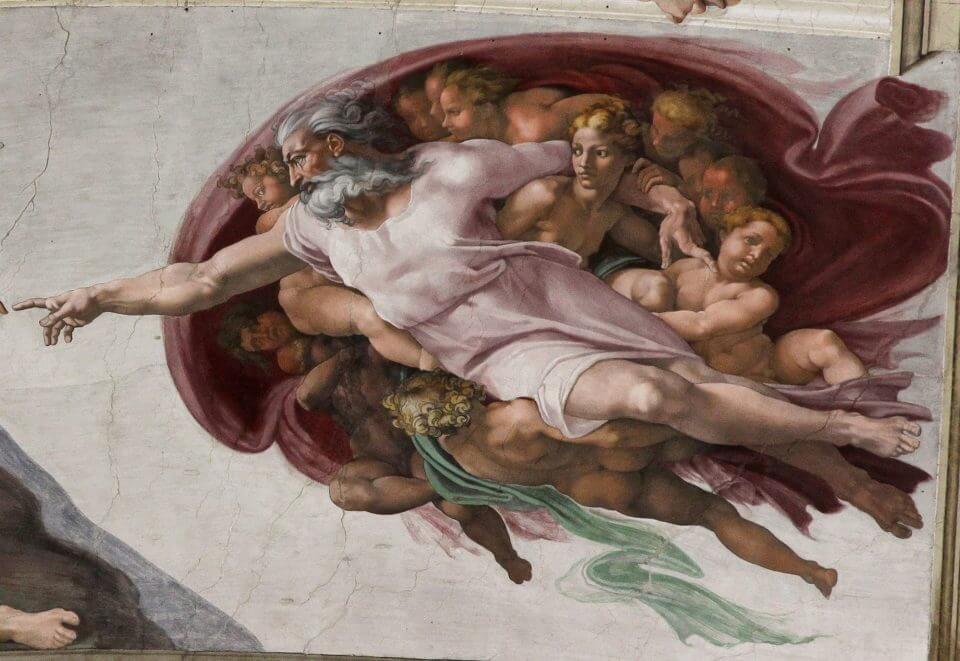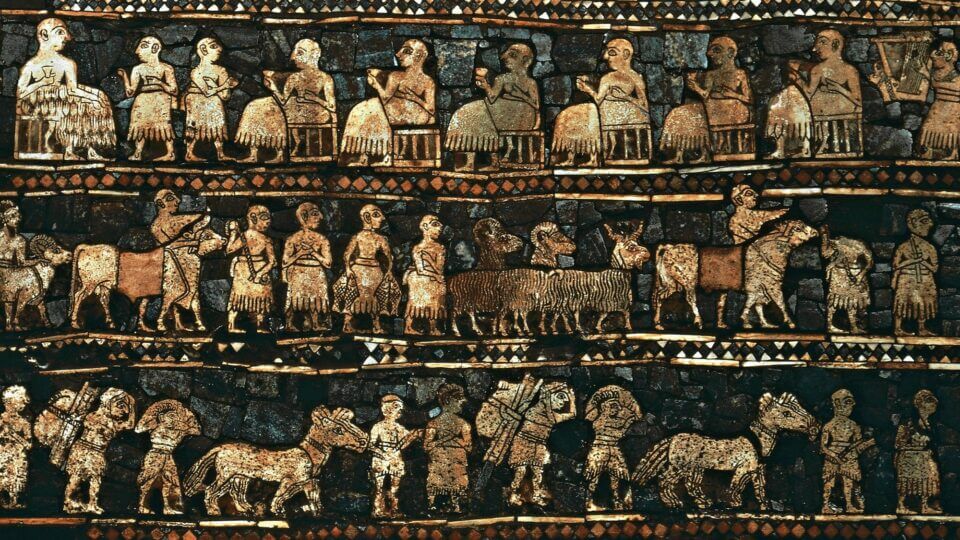
“A civilization that worships at such altars is one that no longer believes in itself, that considers itself irredeemably guilty, sinful or evil…”
As any of us who have been following the one-sided national dialogue around race over the course of the past few months should, by now, have realized, jumbled together with any legitimate just cause #BlackLivesMatter may have concerning the real and continued plight of black Americans at the bottom of the socioeconomic ladder is a bevy of confused, incendiary and violent rhetoric. In that category, perhaps none is as offensive and as telling about the group’s ultimate objectives as #BLM activist Shaun King’s June 22nd tweet calling for “the statues of the white European they claim is Jesus” to “come down.” Such displays, King contends, are a form of … yes, of course: “white supremacy.” But why stop at statutes or even at Jesus himself? King didn’t; he continued in a follow-up tweet: “All murals and stained glass windows of white Jesus, and his European mother, and their white friends should also come down. They are a gross form of white supremacy. Created as tools of oppression. Racist propaganda. They should all come down.”
Yes.
All murals and stained glass windows of white Jesus, and his European mother, and their white friends should also come down.
They are a gross form white supremacy.
Created as tools of oppression.
Racist propaganda.They should all come down.
— Shaun King (@shaunking) June 22, 2020
Predictably, following upon King’s tweets, the media machine, increasingly batting clean-up for the Twitter mob, cranked up its printing presses (here, here, here or here) to push the “yeah, really, why is Jesus so white?” narrative a bit further into the Overton Window. Even the Archbishop of Canterbury got into the act, pondering whether the depiction of Jesus as white ought, indeed, to be re-thought. But what these opinion-makers do not appear to understand is that the demand to take down white Jesus is not merely literal; it is also a metaphor. It is a demand for us, as a civilization, to finally give it all up, to stop worshipping or even cherishing ourselves, to put in our own culture’s and our own God’s place a beatified image of the Other. We are, it hardly need be said, already most of the way there. #BlackLivesMatter would have us take that final leap into the abyss. And as soon as we do, there will be no more “us”; it will all come crashing down.
Our finest thinkers have long understood that all cultures depict gods as sharing their our own features. In the fourth century B.C., the Ancient Greek philosopher Xenophanes wrote:
“[M]ortals suppose that gods are born,
wear their own clothes and have a voice and body.
Ethiopians say that their gods are snub-nosed and black;
Thracians that theirs are blue-eyed and red-haired.
But if horses or oxen or lions had hands
or could draw with their hands and accomplish such works as men,
horses would draw the figures of the gods as similar to horses, and the oxen as similar to oxen,
and they would make the bodies of the sort which each of them had.”
In the 19th century, the left Hegelian German philosopher Ludwig Feuerbach argued that our image of the divine is a kind of self-alienation, an externalization of all those idealized human qualities we ought to, but fail to, embody. Freud posited a dark mirror-image of Feuerbach’s approach, arguing God was our negative projection, an externalization of our deepest guilts and fears. The great sociologist Emile Durkheim held, still more directly and trenchantly, that a people’s religion is a medium through which that society can sanctify and worship itself. Maybe the highest achievement in the exercise of glorious narcissism in imagining the divine was Albrecht Dürer’s self-portrait of 1500 in which Dürer, painting himself very much in the mode of traditional artistic portrayals of Jesus, depicted—depending on one’s interpretation—himself as Jesus or else Jesus in the image of the artist.
Albrecht Dürer, Self-Portrait, 1500:

Just as Xenophanes maintained, white people are in no way unique in depicting God as one of their own. In his recent remarks on the “white Jesus” controversy, the Archbishop of Canterbury observed—while remaining apparently oblivious to the logical conclusion that followed from his own remarks calling for re-examination of the whiteness of our Jesus—that various cultures, in the normal course of things, depict their Jesus as white, black, Chinese, Middle Eastern or Fijian, as the case may be. Peoples practicing other religions are similarly biased in their own favor. The Yoruba Orishas are almost invariably given sub-Saharan African features. Indians regularly depict Hindu divinities as sharing Indian features, while East Asians routinely depict the historical Buddha—in an act just as ahistorical as the blonde-haired, blue-eyed “white Jesus”—in their own image. Although Meso-American gods are typically depicted as having bestial or monstrous rather than human features, their skin is most often red-tinted. Even the Jewish God, whose portrayal is held to be an act of idolatry, is, for all His abstract grandeur, very much figured in the Jewish Torah/Christian Old Testament as a tribal god, a god of a particular people that serves as His priesthood and which, as such, is both gifted with special rights and burdened by special obligations. This is precisely why the message of Jesus in the New Testament is a universalizing one, a kind of widening of the ambit of the Old Testament’s Yahweh into the God of all humanity in equal measure.
Shakyamuni Buddha, Eastern Tibet, 18th century:

Image of Quetzalcoatl from the Codex Borbonicus, circa early 16th century:

What all of this goes to show is that there is nothing remarkable or uniquely “white” about the fact that in fashioning the divine, human beings sing themselves and celebrate themselves, just as surely as sports teams and their fans insist on believing that God is wearing their uniform and rooting for their side. What is truly remarkable, however, is the demand that we “tear it down,” that we take down our depictions of white Jesus, white Mary and the rest of “their white friends” and replace them with…well, replace them with what? is another question.
Just as groups such as the notorious Black Israelites believe that those claiming to be Jews are imposters and that they, i.e., the Black Israelites, are the true descendants of the original Jews of the Bible, whose skin, they imagine, was dark like their own, there are those who believe that Jesus himself was dark-skinned. This is not a view shared by reputable scholars, however, who hold, as we would expect, that Jesus may have looked vaguely “Middle Eastern,” not tall, pale-skinned, blond-haired and blue eyed, but shorter, more olive-skinned, brown-eyed and curly-haired. What, if anything, depicting Jesus in that more historically accurate fashion would do for the cause of #BlackLivesMatter or for the broader cause of black Americans is far from apparent; what tearing down all the images of “white Jesus” and his cohort would do for—or, rather, to—the collective morale of Western civilization, on the other hand, is a good deal more obvious.
The very white and very meek Jesus of a very white town, as depicted in Comedy Central’s South Park:

As the early 20th century Italian nationalist Enrico Corradini argued, virtually all groups of humans and social animals cohere through in-group amity and out-group enmity: a community that turns that polarity on its head is moribund. Taken too far, Corradini’s view leads to jingoism and then on to fascism, and yet too many of us who are committed to a liberal, pluralistic state are blind to the dangers of the extremes of anti-nationalism. As Zach Goldberg has observed in a data-driven 2019 article in Tablet documenting the drift of white American liberals ever further leftward, such liberals “recently became the only demographic group in America to display a pro-outgroup bias—meaning that among all the different groups surveyed white liberals were the only one that expressed a preference for other racial and ethnic communities above their own.” In his 2004 pamphlet England and the Need for Nations, the late conservative philosopher Roger Scruton got at the essence of this very phenomenon:
“No adequate word exists for this attitude, though its symptoms are instantly recognised: namely, the disposition, in any conflict, to side with ‘them’ against ‘us,’ and the felt need to denigrate the customs, culture and institutions that are identifiably ‘ours.’ Being the opposite of xenophobia I propose to call this state of mind oikophobia, by which I mean (stretching the Greek a little) the repudiation of inheritance and home. Oikophobia is a stage through which the adolescent mind normally passes. But it is a stage in which some people—intellectuals especially—tend to become arrested.”
In attacking the depictions of white Americans’ divinities as white-skinned, what Shaun King and the #BlackLivesMatter movement would do is push white America off the edge of the precipice on which it is standing. If the countercultural moment of the 1960’s was the rollicking prelude, the attack on the Western Canon of the late 1980’s and 1990’s the plaintive, heart-rending adagio, and the tearing down of monuments of American Founding Fathers and renaming institutions named after American icons the dissonant scherzo, then the stripping away of white-skinned gods from our churches is the crash of cymbals heralding the grand finale of the American symphony, leaving, in its wake, a series of meandering, broken, dying notes trailing away in a minor key. We will become, in effect, the first civilization in human history to worship a divine that depicts, embodies and sacralizes not ourselves but the Other.
While I am not personally religious, religious belief remains central to the lives of many. It does not take more than a basic exercise in respect and empathy of the sort journalists too often lack to understand that Shaun King’s attack, seconded by mainstream media, upon people’s imagining of the divine is a threat to something deeply personal and yet also critical to the health of our entire political community. In conventional Western theology, we believe in a God who believes in us, in our capacity for goodness and even for greatness. Such a God cleanses us of our real and perceived sins—and by recognizing ourselves in Him and Him in ourselves—we are, as it were, reborn and redeemed. That displacement of our wrongs onto God’s broader shoulders allows us to look ourselves in the mirror and then move forward and on to better things. But God as the Other, a foreign god, is a fundamentally hostile god, one whom we supplicate and before whom we cower…but without any hope of redemption. For this same reason, the replacement of the benign American founding of 1776—with its high ideals of equality, life, liberty and the pursuit of happiness—with The New York Times’ ahistorical and sinister American founding of 1619 rooted in slavery would be disastrous, even if it were historically justified. A civilization that worships at such altars is one that no longer believes in itself, that considers itself irredeemably guilty, sinful or evil; it worships the Other in order to atone for its sins, but it is never granted absolution. Such a civilization cannot possibly survive.
Black Americans are absolutely free to erect images of a black Jesus in those churches in which they constitute the predominant majority. It would be, to be sure, just as ahistorical a rendering as white America’s images of the blue-eyed, blond-haired Jesus at which Shaun King takes aim, and yet it would also be just as intuitive and comprehensible: Like white Americans, black Americans are entitled to portray their gods in their own image. The point of such images is not to be historically accurate; it is to be spirit-rousing, affirming, and uplifting; it is to bond a community together and turn our eyes toward something comforting and familiar but, at the same time, transformative and infinitely greater than ourselves. Unless and until we arrive at the post-racial future that seems to be receding ever faster and further into the distance and in which racial distinctions will cease to matter, black Americans, just like white Americans, need not genuflect before images of the Other in their own houses of worship.
But when it comes to this nation as a whole, America remains a republic founded by white Europeans and in which they and their descendants still constitute a majority. There is nothing amiss, much less outrageous, about this fact, nor—for all the hysterical protestations of the woke mob, the race-baiting media, herd-minded academia, athletes, celebrities, diversity consultants and the like—is there anything amiss about the fact that all the default settings in America—and, yes, even the default portrayal of God Himself—remain tethered to the image of the founding majority. It is fair for others to expect tolerance; it is not fair for them to expect surrender. There are many nations on Earth in which one is free to live and which one is free to leave, and those who prefer default settings—whether linguistic, cultural, religious, ethnic or racial—different from those that prevail in America are free to explore other options. But if, instead, whether literally or figuratively, they feel the need to vandalize our public spaces in order to feel at home in our cities or to tear down our gods in order to worship in our churches, we, in turn, should feel no compunction about calling out their blasphemy against our culture and our traditions and asking them politely but firmly to show respect unless they wish to be shown to the exit door.
Alexander Zubatov is a lawyer in New York, as well as an essayist and poet.











“While I am not personally religious…”
Yes, that much seems clear. You seem to take it for granted that religious folk create their gods in their own image and are in fact right to do so, while many committed Christians, including politically conservative ones, would see creating a god in one’s own image, then worshiping it, as falsehood and idolatry. You treat the demand to “to stop worshipping or even cherishing ourselves” as self-evidently unwarranted, as if self-worship weren’t itself a sin in Christianity as it is traditionally understood.
Faithful Christians are supposed to understand that God is indeed rather Other, far more than simply a reflection of ourselves and of our culture. I’d agree that it’s usually rather harmless and sometimes beneficial for those who believe God came to Man as an ordinary man in Jesus, not too different from themselves, to picture this Jesus as not different in appearance from themselves, even if that results in a white (or any other color) Jesus. But the purpose of this picturing isn’t supposed to be so that believers can better worship themselves. And, given the Christian God’s role in deposing the mighty from their thrones while uplifiting the lowly, in welcoming the stranger and so on, it can also be useful for Christians to picture Jesus as the outsider, as not of their own ethnic group. For Jesus was an outsider, too, the man of Isaiah 53, a man despised and rejected of men, the man whom “we” esteemed not. While culling “white Jesus” from Christendom is unnecessary, for relatively powerful and comfortable Christians (as some white Christians indeed are) to sometimes wonder whether their picture of Jesus isn’t Other enough can be salutary to their faith. Not salutary because “wokeness” must be honored, but salutary because the witness of scripture and teachings of the faith presumably should be.
The Christian God does not condone self-worship. Perhaps we Christians ought to cherish ourselves the way Christ cherishes us, but, given fallen human nature, it’s also reasonable for Christians to worry they’d slide into the sin of self-worship if they tried. The Christian God is not supposed to be a tribal god, and assumptions which reduce Him to one in the service of “Western Civilization” (or anything else) betray their irreligious nature.